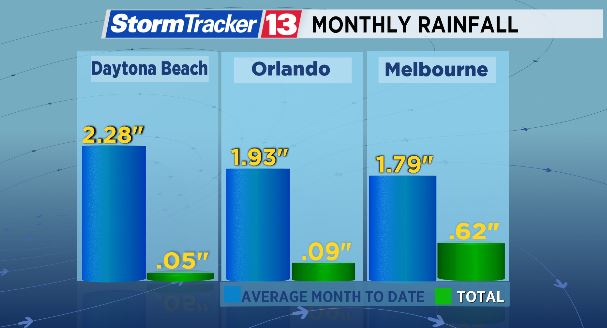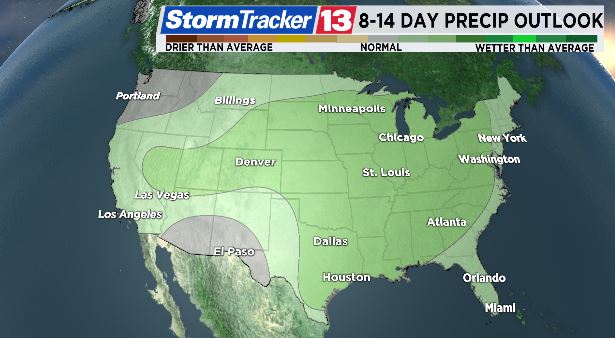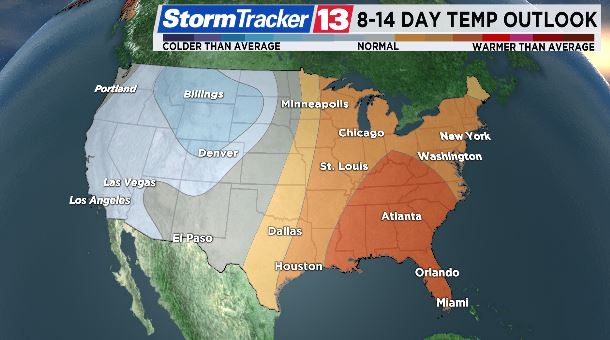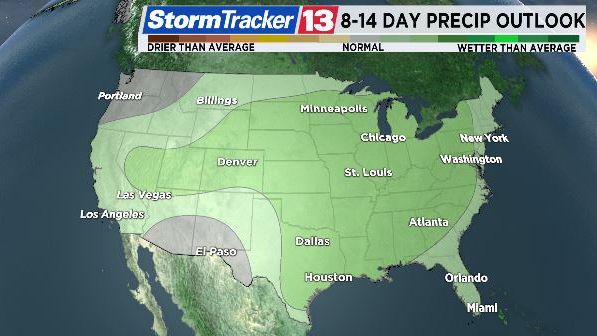ORLANDO, Fla. — Rain has been spotty to start 2019, and that trend has continued through the halfway point of March.
- Central Florida experience record dryness in March
- Area usually sees spike in rainfall during March
- Good chance March could finish warmer than average
- MORE: Spectrum News 13 Weather Experts Blog
Orlando is experiencing its seventh driest start to a March on record, while in Daytona it is the third driest start to the month.
Daytona Beach has only picked up 0.05 inches of rain through March 17, and Orlando has only received 0.09 inches of rain so far.
Climatologically, Central Florida sees a spike in rainfall during the month of March compared to January and February, but this hasn’t been the case thus far.
Orlando, Sanford, Melbourne, and Daytona Beach all pick up 3-4+ inches of rain normally during March. That is up from about 2 inches of normal rainfall during January and February.
 March rainfall totals compared to normal through the 17th.
March rainfall totals compared to normal through the 17th.So far none of these cities have picked up more than an inch of rain through the middle of this month. The most rain has been in Melbourne, where they have received 0.62 inches, but this is still more than an inch drier than average.
There are suggestions in the long-range weather forecast models saying our weather pattern could remain unsettled for the remainder of the month.
The eight to 14-day rainfall outlook is suggesting a higher probability of wetter than average conditions for the last week of March.
After a brief cool down here in the middle of March, it looks like there is a good chance March could finish warmer than average.

8-14 Day Precipitation Outlook for the last week of March
Not only has March been dry so far, but for 2019 every location is more than inch drier than average to start the year — the one exception is Melbourne.
Daytona Beach has a 3-inch rainfall deficit right now. Meanwhile, Melbourne has more than a 2-inch rainfall surplus, and that is after an extremely dry 2018 in Brevard County with severe drought conditions for a time.
Melbourne is now at 135 percent of normal rainfall for the year, and the drought conditions have greatly improved since January.
It would be good to finish March with more rain in the bucket, because normally April is the driest month of the year for Daytona Beach, Sanford, and Melbourne. It is the fourth driest month in Orlando. November is actually Orlando’s driest month.
Below is a breakdown of the rainfall since January 1 through the middle of March for each of the four main weather observation stations in Central Florida:
 8-14 Day Temperature Outlook for the last week of March
8-14 Day Temperature Outlook for the last week of MarchOrlando
- 2019 rainfall-to-date: 5.35”
- Average rainfall-to-date: 6.66”
- Departure from average: -1.31”
- Percent of average: 80 percent
Daytona Beach
- 2019 rainfall-to-date: 4.85”
- Average rainfall-to-date: 7.80”
- Departure from average: -2.95”
- Percent of average: 62 percent
Melbourne
- 2019 rainfall-to-date: 8.92”
- Average rainfall-to-date: 6.59”
- Departure from average: +2.33”
- Percent of average: 135 percent
Sanford
- 2019 rainfall-to-date: 5.89”
- Average rainfall-to-date: 7.20”
- Departure from average: -1.31”
- Percent of average: 82 percent
**Records for Orlando go back to 1892, 1923 in Daytona Beach, 1948 in Sanford and 1937 in Melbourne**



